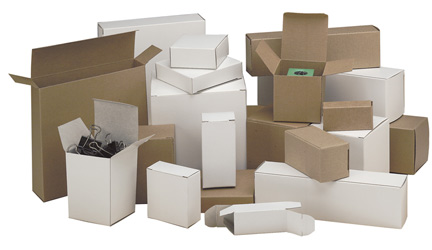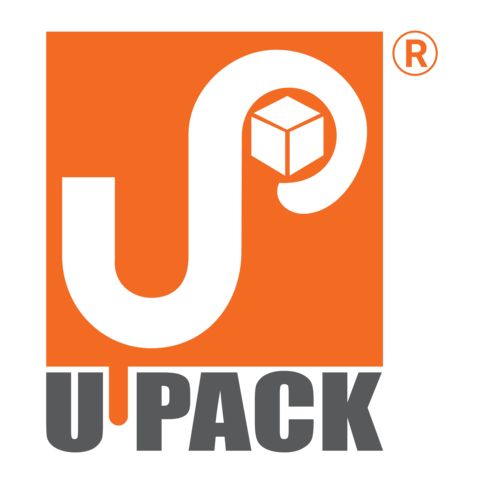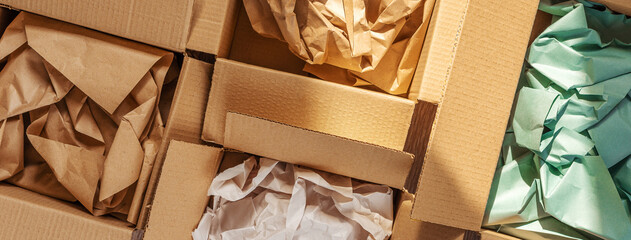Corrugated 101
Corrugated Boxes 101
Introduction
Here is everything you need to know about corrugated boxes. In this blog we will learn about:
- What is a Corrugated Box?
- How Corrugated Boxes are Made.
- Fiberboard in Manufacture Corrugated Boxes
- Types of Corrugated Boxes.
- And more...
What is a Corrugated Box?

A corrugated box is a disposable packing material whose sides are made up of layers of material that include an inside layer, outer layer, and middle layer. The middle layer is fluted, which means it is styled in rigid, wave-shaped arches that provide cushioning and support for weighted materials placed in a corrugated box.
The common cardboard box has been around for over 200 years. The practice of adding flutes for corrugation began in the middle of the first industrial revolution. Over the years since its development, the corrugated box has become the most common form of shipping container and is found in every aspect of material management and transport.
How Corrugated Boxes are Made?
Although building a corrugated box may appear to be a straightforward operation, there are a number of factors to take into account before starting production. Corrugated boxes are developed and engineered to decide what they can contain, how much they can hold, and their strength, just like any other manufacturing and transportation equipment.
The first step in box manufacturing is to examine the various elements of the box, which are construction, flute size, burst strength, edge crush strength, flat crush strength, the heaviness of the cardboard sheets, weight / GSM of the paper, and types of surface treatments (water proof coating, Michelman coating, etc)
What are some of the important elements of the corrugated box?
Construction Corrugated Box
There are three types of walls for a corrugated box: single, double, or triple.
- Single Wall - This is the simplest corrugated wall design, with a single outer layer and inner layer fluting between the two layers.

- Double Wall - The double wall design adds an additional layer of fluting to produce a box capable of handling heavier and larger items.

- Triple Wall - As the name implies, triple wall corrugated boxes have three layers of flutes. Each layer has differently sized flutes to add stability. The added layers maximize cushioning and compression strength.

Corrugated Flutes
Five common types of corrugated flutings, are A, B, C, E, and F. Though these are standard, manufacturers and designers can create and construct customized versions, which can be combinations of the standard versions or unique, unusual designs.
- A – is the original type of flute at 36 flutes per foot and is used for double wall applications and thick corrugated padding.
- B – has the second highest arch size with 49 flutes per foot and has stacking strength and crush resistance.
- C – mostly used flute with 41 flutes per foot for cushioning, stacking, and printing properties.
- E – second mostly flute, environmentally friendly with 90 flutes per foot.
- F – has small, tighter flutes, and is environmentally friendly with 128 flutes per foot.
Different Sizes of Flutes

Aside from the five above flute styles, there are specialty flutes that are combinations of the above flutes or that fall between the regularly used flutes, such as D flutes. Other special flutes include EE, EF, and BC, which are used with double-wall flute profiles. Flutes such as N and O are rarely used and are extremely small at less than half a millimeter.
The Mullen Test, which was developed over 130 years ago, applies force to the face of the corrugated material until it bursts.
Mullen Test (Burst Strength)
The amount of force that can be given to a corrugated box before it bursts, fractures, or crumbles is known as the material's burst strength. The test findings are presented with a rating and are stated in pounds. A 200-rated box, for instance, has a resistance to 90 kg per square inch of force. A force is applied to the corrugated material's face in the Mullen Test, which was created more than 130 years ago, until it bursts. The findings of the Mullen test provide information on the force per square inch needed to pierce the paper of a corrugated box.

The Mullen test predicts how a box will hold up to individual shipping and the rough treatment it will receive from manufacturing processes and mail carriers. The contents of the box are more likely to shift inside and possibly puncture the package as it travels through the various distribution channels.
The flaw with the Mullen test is that the fluted medium doesn't add to the bursting strength of the box. This isn't to say the medium isn't important because 50% of the stacking strength of a box comes from the medium. This is where the Edge Crush Test comes in.

Edge Crush Test (ECT)
ECT, or the Edge Crush Test, quantifies a box's vertical compression strength, thus indicating how well it can withstand stacking for transportation or placement on a pallet. It serves as a reliable method to ascertain a box's resilience and shape retention capacity during handling and transit. In contrast to tests assessing 'material characteristics', the ECT is a 'performance-based' property examination.
Several factors can influence a box's ECT, including humidity, duration of stacking, extent of crush experienced during production machine pass-through, and the pattern of stacking. A box that successfully clears the ECT with a score of 55 can withstand a pressure of 55 pounds (approximately 25 kg).
GSM (Grams per Square Meter)
GSM is a measure of the weight of cardboard sheets before their conversion into boxes and represents the weight of a ream of paper in kilograms. Given that paper can come in a myriad of sizes and widths, GSM values can vary and must be derived by measuring and weighing a paper sheet.
Weight of Cardboard
The weight of cardboard hinges on the thickness of the cardboard paper. The weight of the paper used to fabricate corrugation sheets is measured in kilograms, which can range from 11.8 kg to 19 kg (roughly 26 lbs. to 42 lbs).
Coatings
During the production of corrugated boxes, coatings, and finishes are applied to protect the stability of the box and give it a certain appearance. There are two basic types of coatings, which are aqueous and UV.
- Ultraviolet (UV) - Ultraviolet is cured under ultraviolet light and is resistant to scratches and scuffs. It is more expensive than aqueous coating but lasts longer and is sturdier.
- Aqueous - Aqueous is a clear fast-drying coating that serves as protection for the surface of a box. It can be high gloss or matt and protects against wear and dirt.
Producing Corrugated Board
The machine that produces the corrugated board for corrugated boxes is called a corrugator. The main elements of corrugated board are liners that are the flat facing of the board and come from various grades of paper. This central element is made from the long fibers of softwood trees. The fluted portion is made from shorter fibers found in hardwood trees.
Huge rolls of paper are combined in a single facer that produces the fluted form. To create the flute, the paper is steam heated to 170° C. The fluted paper is attached to a single sheet of the liner by the application of glue at a controlled temperature to the peaks of the flutes and pressed flat by pressure rollers. This produces the single-faced web.

The single faced web moves from the single facer to the double glue unit and double backer after leaving the single facer. Two single face webs and the liner are put into the machine to create a double wall corrugated paper. The exposed flute tips in the double glue unit have glue applied to them to join the outer liner. To cure the glue and guarantee a solid bond, the liner and fluted single face web are continuously heated at controlled and monitored temperatures throughout the operation.
After leaving the double backer, the corrugated board is pulled through the dryer, scored, and cut to the required length.

The various lengths of board are stacked to be fed into the box printing and creation equipment. Depending on the types of boxes, they are printed with logos, designs, and an assortment of colours.
Finalizing Corrugated Boxes
The scored, printed, and cut corrugated boards are fed into a trimmer that perforates the boards to create flaps and handles. This process can complete as many as 90 boxes per minute.
Once the boxes have been sufficiently formed and trimmed, they are sent on to the folding machine that bends the box along the score lines and applies glue to the sections that will be joined together to complete the forming of the box.

The complete process, from the cutting of the corrugated board to the printing, slotting, and shaping of the box, can be seen in the diagram below.

Corrugated vs. Cardboard – What’s the Difference?
Given what a corrugated box is and how widespread they are, you might be wondering what distinguishes corrugated from cardboard.
Corrugated cardboard is distinct from regular cardboard, as we've already discussed, but let's explore this idea in more detail.
In general, cardboard is made of hefty paper pulp or thick paper stock and offers little protection during shipping.
It is primarily used for smaller product packaging and containers, but it can also be utilized inside the packaging as structural support to prevent goods from deforming during transit.
Remember how corrugated boxes have three layers of fiber board two liner boards and a flute in the middle and cardboard is just one layer.
If your business is shipping anything out, corrugated boxes are among the greatest choices.
CORRUGATED BOX CARDBOARD BOXES


Applications of Corrugated Boxes in India
Food Sector
To avoid contamination of fresh fruits and vegetables, the adhesive utilised to connect the flutes and liners in the manufacturing process of corrugated boxes is composed of water and starch. The use of corrugated boxes in the food transportation brings numerous benefits. Their hygiene and resistance to bacterial infection are the foremost benefits. Numerous investigations have proven that food items retain their freshness for a longer period when transported in corrugated packaging.
Office Supplies and Stationery
Office supplies, particularly paper, are at risk of getting damaged during transit or storage, and hence this is a prime concern when dispatching or storing them. The robustness and cushioning effect of corrugated boxes offer protection against such damages and relieve your concerns about dealing with damaged supplies.
E-Commerce
In the e-commerce sector, the paramount use of boxes lies in an efficient and swift supply chain. Corrugated boxes, whose usage has escalated over the past couple of years, form the backbone of the e-commerce supply chain. The shipping of smaller volumes to a proliferating number of remote and odd locations poses a challenge for the e-commerce sector. The level of protection and security demanded by the e-commerce sector is met by corrugated boxes.
Healthcare
Materials dispatched for healthcare purposes need to be dealt with the same level of care and concern as those for the electronics sector. Improper packaging and handling can easily ruin delicate and sensitive medical equipment. With several regulations governing the shipping conditions to ensure that medicines arrive safely, pharmacies can dispatch their goods with the assurance that the medicines are well-protected and safe, thanks to the broad variety and selection of corrugated boxes.
Batteries
Materials for shipping batteries must comply with stringent safety and legal compliance standards and regulations. These custom-designed boxes are manufactured using fibreboard that conforms to the universally recognised standards of the corrugated box industry. Every battery shipping container, in addition to utilising specially made liners, must be conspicuously marked with the contents and relevant safety instructions.
Electronics
When it comes to packaging electronic items and components for shipping, utmost care must be taken. These kinds of goods are fragile and can easily get damaged if not packed appropriately. For this reason, corrugated boxes are used and complemented with additional packing materials for more protection. The major concern is the stress exerted on components while handling the box. The shock resulting from such stress can damage a circuit or loosen a connection. The cushioning found in a corrugated box mitigates these worries and prevents damage, guaranteeing that an electronic product arrives on schedule in pristine condition.
When it comes to packaging electronic items and components for shipping, utmost care must be taken. These kinds of goods are fragile and can easily get damaged if not packed appropriately. For this reason, corrugated boxes are used and complemented with additional packing materials for more protection. The major concern is the stress exerted on components while handling the box. The shock resulting from such stress can damage a circuit or loosen a connection. The cushioning found in a corrugated box mitigates these worries and prevents damage, guaranteeing that an electronic product arrives on schedule in pristine condition.

